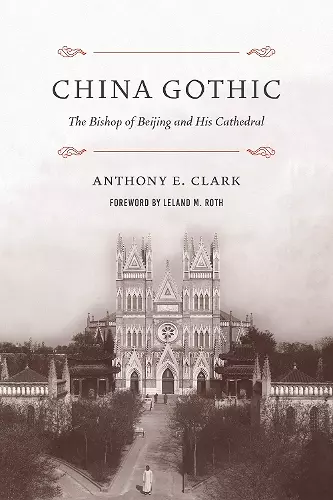China Gothic
The Bishop of Beijing and His Cathedral
Format:Hardback
Publisher:University of Washington Press
Published:6th Jan '20
Currently unavailable, and unfortunately no date known when it will be back

Architecture as an evangelizing tool in late imperial China
As China struggled to redefine itself at the turn of the twentieth century, nationalism, religion, and material culture intertwined in revealing ways. This phenomenon is evident in the twin biographies of North China’s leading Catholic bishop of the time, Alphonse Favier (1837–1905), and the Beitang cathedral, epicenter of the Roman Catholic mission in China through incarnations that began in 1701. After its relocation and reconstruction under Favier’s supervision, the cathedral—and Favier—miraculously survived a two-month siege in 1900 during the Boxer Rebellion. Featuring a French Gothic Revival design augmented by Chinese dragon–shaped gargoyles, marble balustrades in the style of Daoist and Buddhist temples, and other Chinese aesthetic flourishes, Beitang remains an icon of Sino-Western interaction.
Anthony Clark draws on archival materials from the Vatican and collections in France, Italy, China, Poland, and the United States to trace the prominent role of French architecture in introducing Western culture and Catholicism to China. A principal device was the aesthetic imagined by the Gothic Revival movement of the eighteenth and nineteenth centuries, the premier example of this in China being the Beitang cathedral. Bishop Favier’s biography is a lens through which to examine Western missionaries’ role in colonial endeavors and their complex relationship with the Chinese communities in which they lived and worked.
"Clark’s book represents a valuable contribution in presenting the life and work of perhaps the most important Catholic bishop in nineteenth-century China"
* Monumenta Serica *"[S]heds new light on an otherwise understudied era of architectural production in imperial China. The importance of the book lies in Clark's extensive archival work, which has yielded new textual and visual evidence of missionary-related activities in Qing China."
* Journal of the Society of Architectural Historians *"Clark connects scholarship on architecture with the political history of modern China. Broadly mobilizing secondary sources from political, missionary, and architectural studies, the book provides an account that largely harmonises with established historical narratives."
* Architecture Beyond Europe *"Clark’s groundbreaking book delivers a pathway by which to approach China’s “century of humiliation” through piecing together Favier’s personal career, his long-forgotten architecture, and Sino-European conflicts... enriches our nuanced understanding of the nature of the Sino-European conflicts."
* East Asian Science Technology and Medicine *"[P]aints a vivid picture of the intricate relationships between Catholic missionaries in China and the local community... a most valuable contribution to colonial studies, architectural history, and Sino-Western interactions. [Clark] has...paved the way for what has enormous potential for further discussion and research."
* Religious Studies Review *"Examining Favier’s influence on the “fate of late-imperial China,” Clark’s monograph weaves an engaging narrative of his missionary career in China into the macrohistory of the Sino-Western cultural and political interactions. By focusing on Gothic architecture as Favier’s means for cultural and religious diplomacy, the book provides us with a unique angle to relate Gothic architecture to his Eurocentrism and French nationalism; and the vivid description of the Gothic features in Beitang and his other Catholic churches lends strength to the theme of the book."
* Chinese Historical ReviISBN: 9780295746678
Dimensions: unknown
Weight: 454g
240 pages